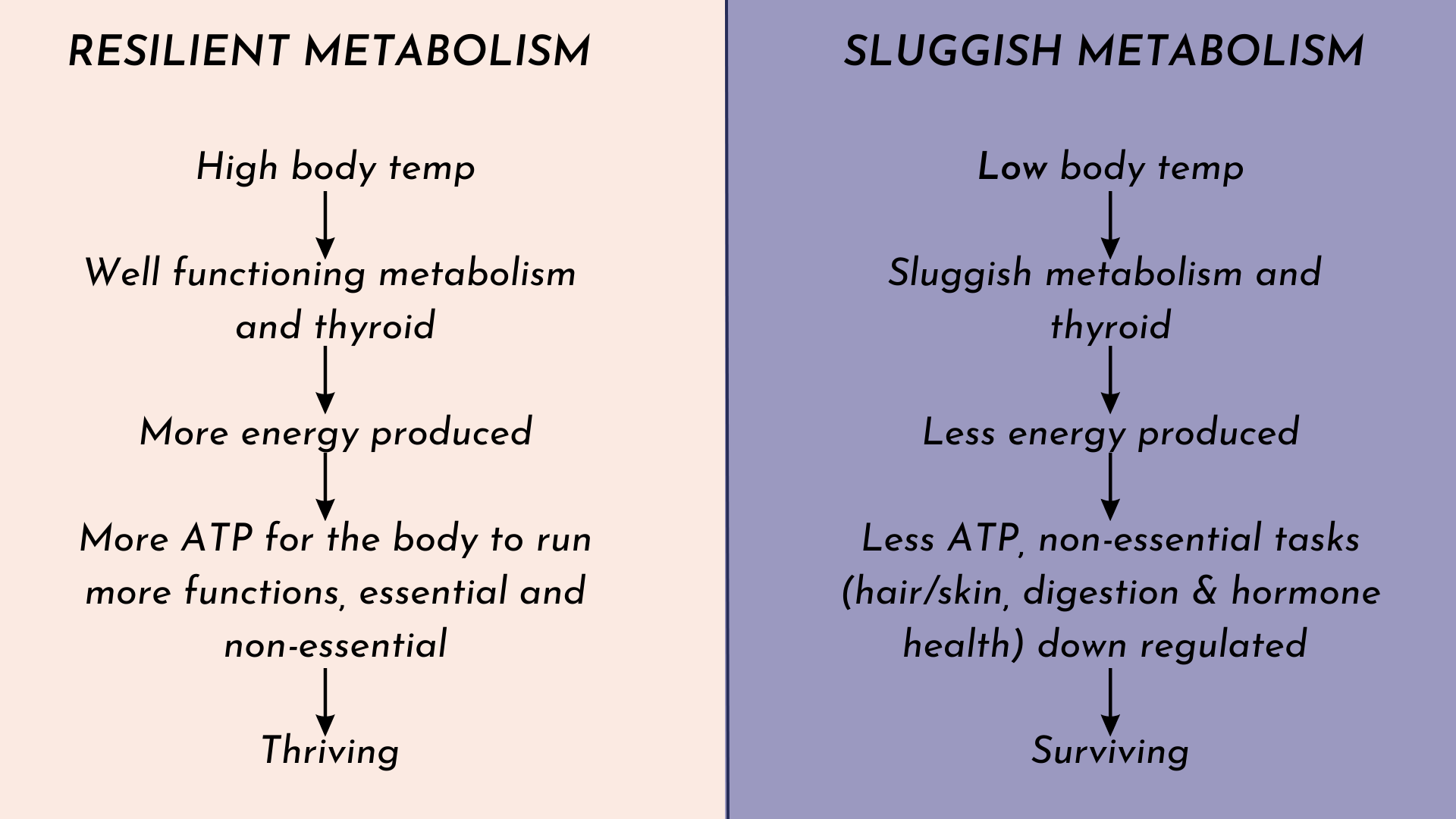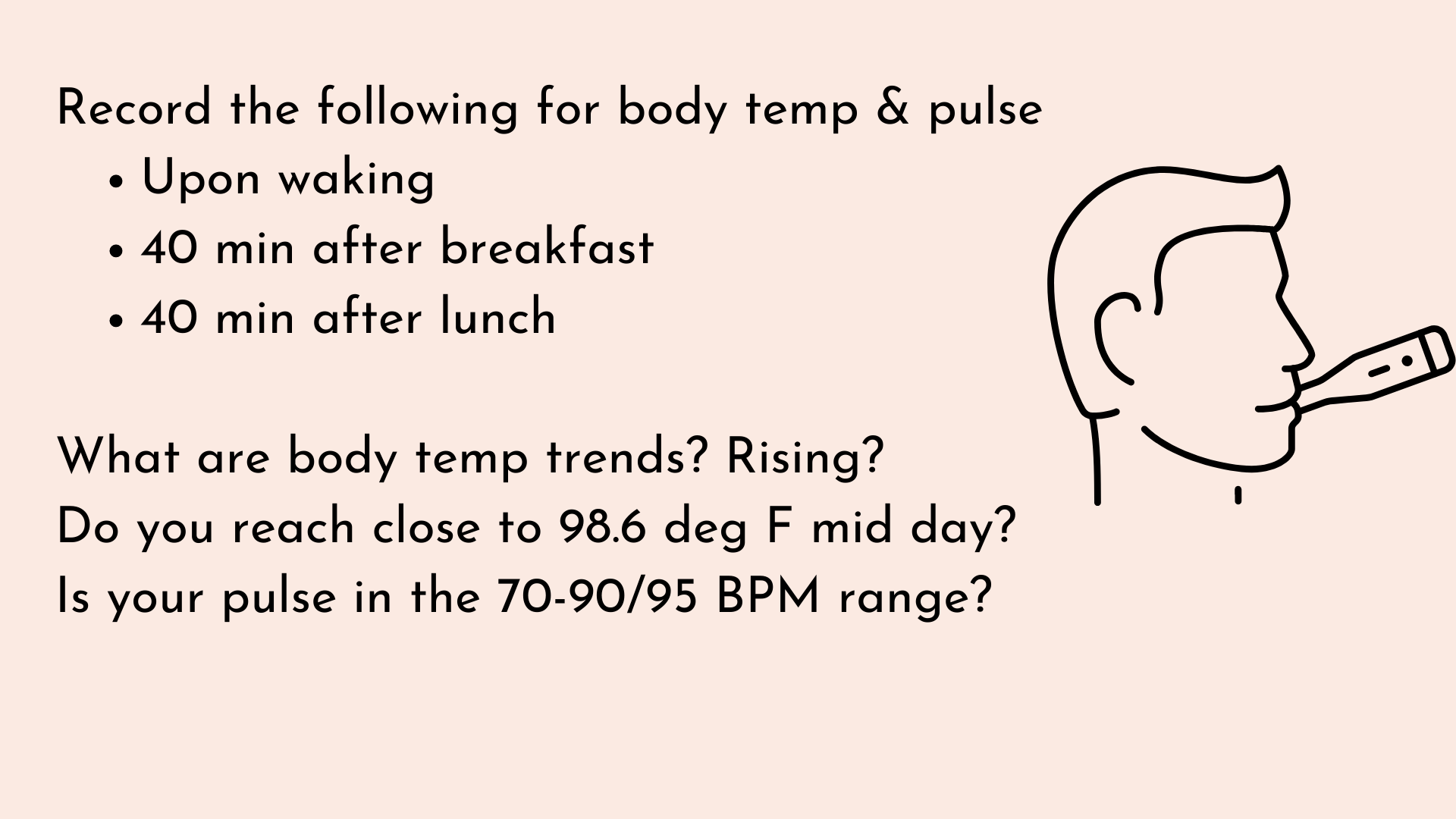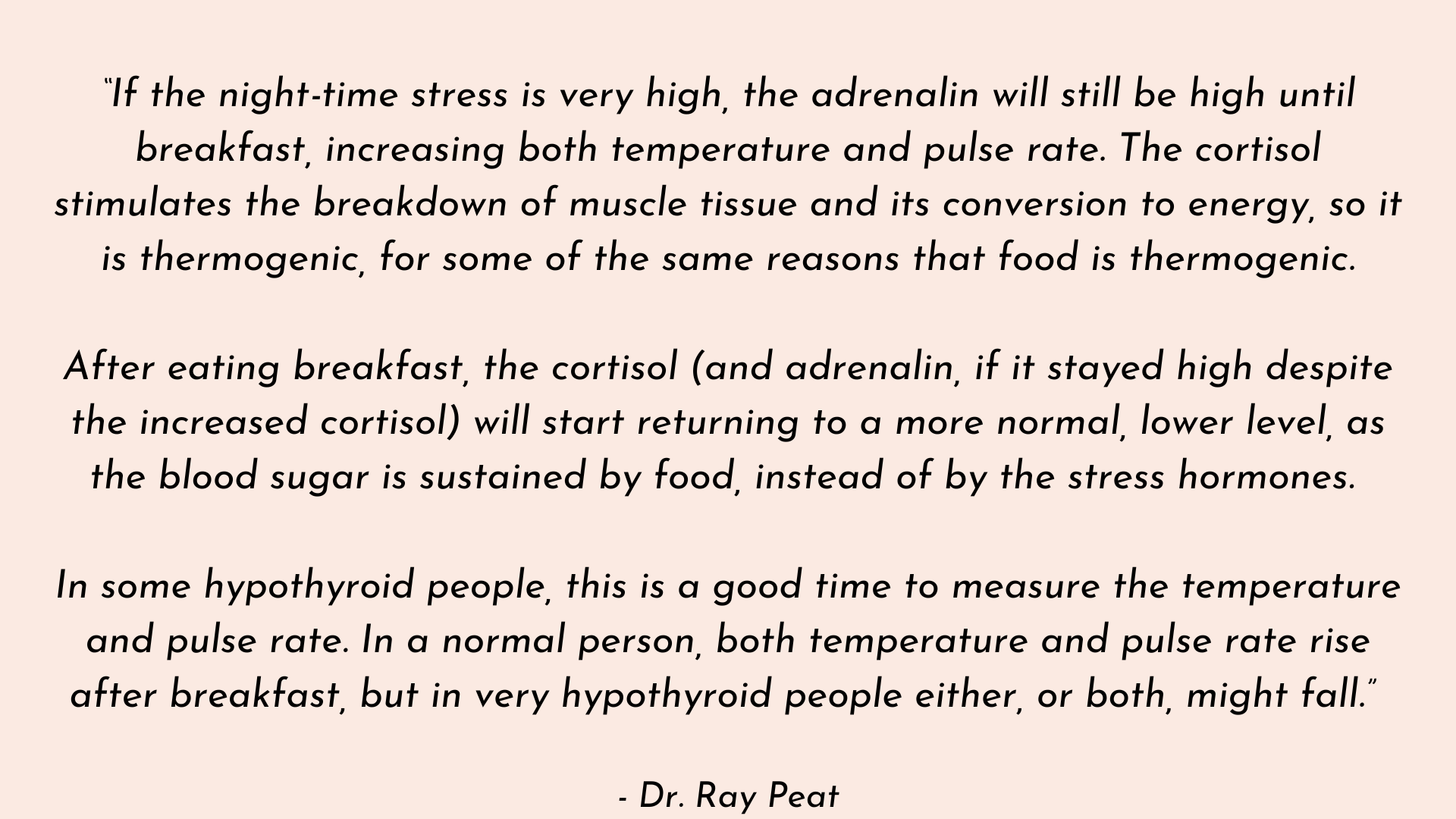What made me stop the carnivore diet
Feb 24, 2023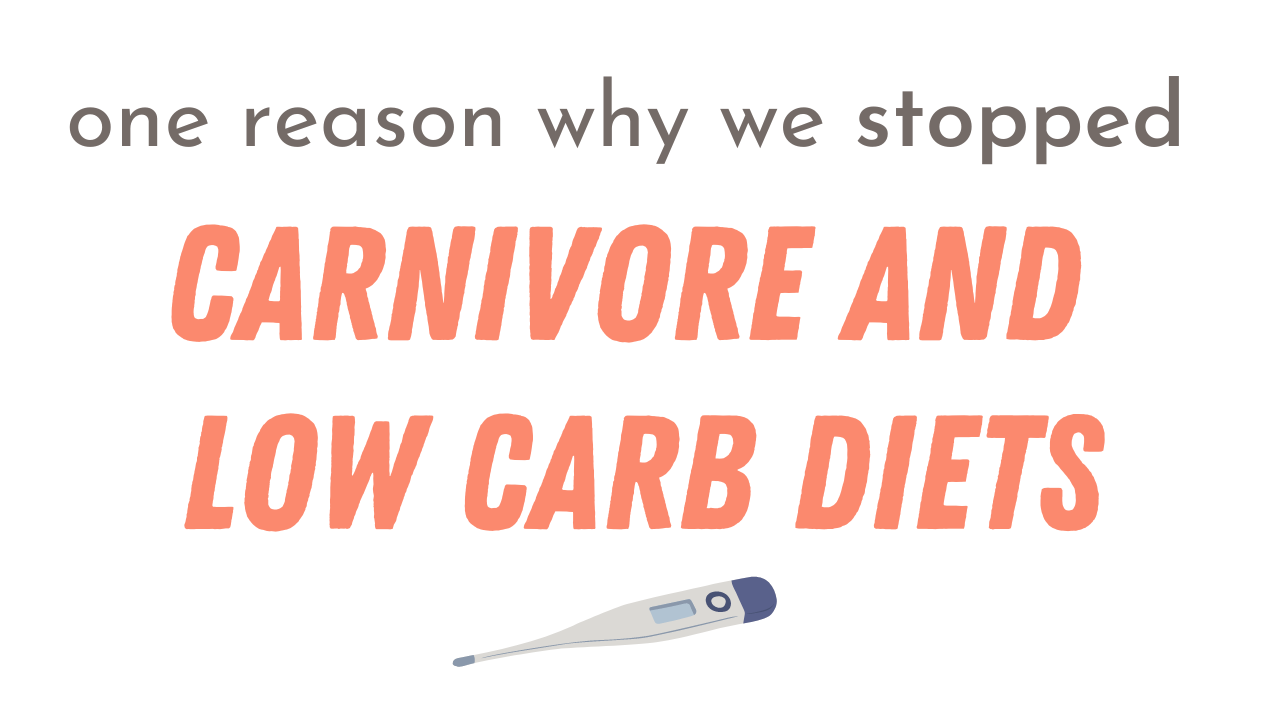
The moment I realized the carnivore diet was not serving me and my long term health was when I measured my body temperature for the first time, over three years ago.
The oral thermometer reading was… 96.5 deg F. With common pulse readings of 50-60 bpm.

Sarah and I had just discovered the work of Dr. Ray Peat, Dr. Broda Barnes, and others and realized how important thyroid and metabolic health was. And that a super simple way to assess overall health was body temperature and pulse readings.
And to put it kindly, my readings screamed YOU ARE IN SURVIVAL MODE.
AKA, opposite of thriving.
A thriving body generates sufficient energy to meet the energetic demands, so that all functions of the body run smoothly.
A simple way to assess your thyroid and metabolic health, and determine whether you are chronically relying on stress hormones, is body temperature and pulse measurements taken throughout the day.
Body temperature is a sign of how well your body is creating and utilizing energy.
You don’t run on thin air. Your body requires energy to function.
In a thriving and resilient body, your waking temperature should be high 97s/low 98s (deg F), and pulse measurements should be in the 70-90/95 BPM range.
Your body temperature should then slowly increase after each meal reaching 98.6 deg F mid day or early afternoon. Body temp will then slowly decline as we get closer to bed. Pulse measurements throughout the day should be in the 70-95 BPM range.
A body temperature of 98.6 deg F is the optimal temperature at which the systems in the human body function. (ref)
Why? Enzymatic function depends on temperature. And every loss of optimal enzyme activity means a loss of functionality for the respective organ tissue or body part.
A drop of only 1.8 deg F can result in a loss of approximately 50% of enzymatic activity. (ref)
Professor Hiromi Shinya, PhD (Albert Einstein College of Medicine, NY, USA) confirmed that lowering the body temperature by only 0.9° results in a 30% decline in enzyme and immune activity. He also discovered that cancer cells can multiply much faster at 95°F than at 98.6°F. The conclusion from his studies: “Humans with low body temps have decreased immunity, suffer circulation disorders, have increased genetic changes & thus an increased cancer risk.” (ref)
Wait so how is the body temperature and thyroid linked?
Thyroid hormones regulate the metabolism of the entire organism, and act on almost all organ systems throughout the body. Thyroid hormones play a major role in the production of energy (assessed by body temp), but also in the nutrient and energy delivery to cells throughout the body (assessed by pulse).
Chronically low body temp and pulse measurements are a clear sign of a slowing metabolism and decreased cellular function.
Sluggish metabolism = less energy and heat produced = lower body temp = decreased function throughout the body.
As your core body temperature falls, overall body function declines. (ref)
What happens to animals when they hibernate? Think squirrels and bears.
They lower their body temperature in order to conserve energy. Bodily functions are downregulated as a result so that they can thrive through the season of hibernation.
Do you want to hibernate through life?
Heck no!
You have too many dreams to chase. Too many sunrises and sunsets to catch.
When you learn these physiological principles and become EMPOWERED, you can better understand why some foods or activities may be metabolically supportive, or if they may hinder energy production. Rather than arbitrarily labeling something as good/bad.
The state your body is in impacts how the overall body functions as a whole.
And a really easy way to assess the state your body is in is body temperature and pulse measurements throughout the day.
It’s important to take measurements throughout the day, as stress hormones can keep your morning body temperature high.
A drop in body temp after a meal shows that the food we consumed is lowering our stress (which is of course a good thing!), but it’s not necessarily adding to our metabolic energy reserves.
A metabolically stimulating meal should increase heat (and thus, energy) production.
So, ideally your body temperature measurements should look like the pattern on the left. The pattern on the right is a sign of a sluggish thyroid and metabolic system, and high stress hormones.
Understanding the importance of body temperature, thyroid health, and metabolic rate was one of the main reasons why we STOPPED carnivore over 3 years ago.
“Feeling good” can sometimes be subjective, as running on stress hormones can feel really good at first. If you are coming from a standard american diet, or eating really gut-irritating foods, and then go to an extreme, restrictive diet (like keto or carnivore) - of course you will feel better! Gut health impacts every aspect of our health!
But at some point, the restriction caught up to us.
Our metabolism and thyroid TANKED.
Living on stress hormones felt good, until it didn’t.
Our hair started to thin, our hormones still weren’t fixed, we weren’t able to tolerate many foods, we were cold all the time, and our energy just crashed. Like we were all of a sudden run over by a bus.
Our body could no longer keep up with our energy demands.
Living, eating, and exercising with a ‘metabolic health’ focus has helped ‘turn back on’ bodily functions that were downregulated during our fasting, keto and carnivore days.

Okay i think it is clear that low temps and pulse measurements is a sign your body has adapted to and is chronically living in a stressed out state.
And unfortunately, the body temperature trend of humans is declining (ref) The ‘normal’ oral temperature of adults in the US is now on average lower than the ‘canonical’ definition established in the 19th century of 37 deg C (98.6 deg F). (ref)
In the 1800s Carl Reinhold August Wunderlich took approximately 1 million temperature readings from 25,000 people and discovered that the average body temperature was 98.6 deg F (ref).
The body temperature of people today is at least 1° F lower than the values that were normal about 180 years ago (ref, ref).
A sick, weakened, and cool organism has unfortunately become the norm today.
This ‘cooling down’ is documented in a number of studies, which show a decline in temperature from the 1800s to 2000. These trends continue to today.
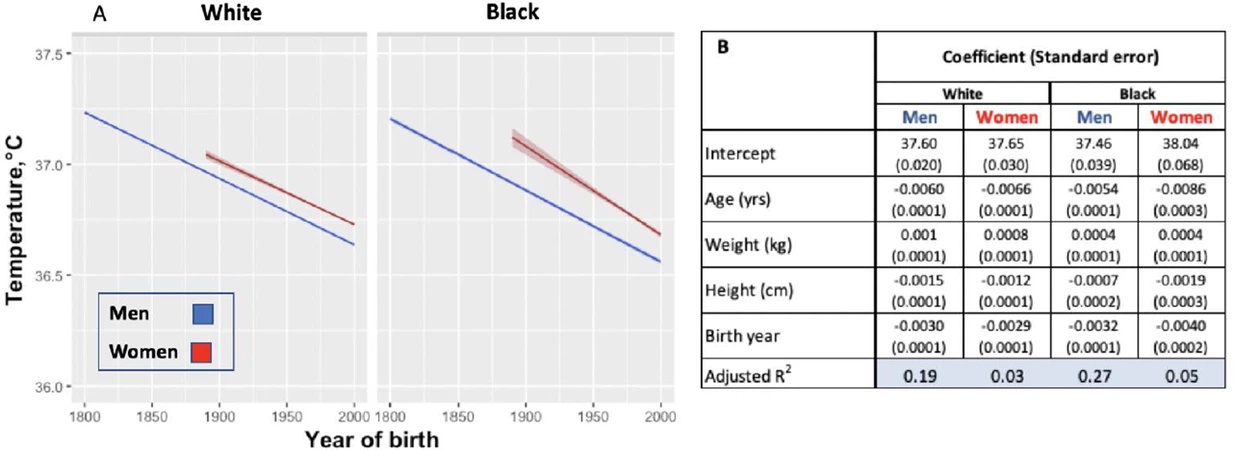
Fig from (ref).
Does this mean that all hope is lost?
Heck no!
While we have a lot of factors working against us in modern times like high-stress jobs and environmental toxins, body temperature and pulse data (and thus, your metabolic rate) can be improved.
There are countless examples, including ourselves and numerous course students. The whole goal of our course, Rooted in Resilience, is to provide you with the tools to boost your thyroid and metabolic health. And a byproduct of improving energy production, will thus be improved function and higher body temps.
But you have to stop going down these restrictive pathways. While there may be short term benefits to restriction, they almost always come at a long term metabolic cost (which is hard to ‘see’ in the short term).
There are simple tweaks you can do to your nutrition approach, food choices, lifestyle, exercise routines, and environment to boost your metabolism and improve systemic function.
And this is what our course is designed to help you do.
Questions about these measurements? About our course? Email me! (Ash)


